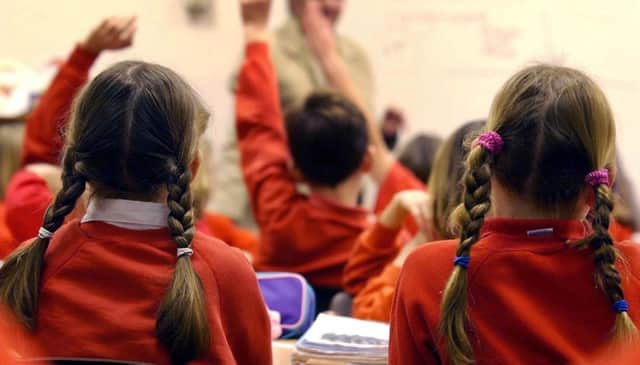Cultural segregation of school pupils is only declining slowly


Overall, 61 per cent of ethnic minority children in England begin Year 1 in schools where ethnic minorities are in the majority, with one in four of the country’s school students having an ethnic minority background.
And the level of segregation in English schools is failing to substantially decline, even though the country’s population is becoming more and more culturally diverse, Demos reported.
Advertisement
Hide AdAdvertisement
Hide AdAcross the country, around 94 per cent of White British students are in White British-majority schools.
The findings suggest that new population growth is not being spread equally throughout the country with primary schools in Bradford, Calderdale and Kirklees among those where White British children are most commonly in the minority in the classroom.
Blackburn, Birmingham, Oldham and Rochdale are the other areas with the highest levels of separation in primary schools from the White British population, according to the study.
It is children from Bangladeshi, Pakistani and Black Caribbean communities who are particularly likely to attend schools where a disproportionate number of other students share their ethnic background.
Advertisement
Hide AdAdvertisement
Hide AdOverall however, Simon Burgess, professor of economics at Bristol University who processed the data for the Demos Integration Hub, believes there is less segregation in schools.
“The pupil population in England’s schools is becoming more diverse. And at the same time, ethnic segregation in schools is generally declining, or is stable,” Prof Burgess said. “It’s clear that segregation is certainly not zero, and some schools in some places remain highly segregated, but overall I feel that this is a situation that is improving.”
The analysis found that there is not always a strong correlation between the level of segregation in schools and the size of the local ethnic minority population, and the level of segregation in schools appears to decline as children progress through the year groups.
Dr Richard Norrie, research associate at Demos, said: “These data show a gradual decline over time in segregation levels in schools for all ethnic minority groups, which is to be welcomed. However, the rate of change is slower than the levels of population growth.
Advertisement
Hide AdAdvertisement
Hide Ad“While we couldn’t expect these communities to spread out on a truly equal scale, we would hope for a much greater level of integration for students at the start of their education, given how important we know it is for children to be connected to a wide range of cultures and opportunities.”
Ian Murch, treasurer of the National Union of Teachers and the union’s former Yorkshire branch official, used Bradford as an example of how there are now more religious schools, which, he said, inevitably leads to segregation.
He said: “The nature of a school is more likely to define itself in a way that attracts children from ethnic groups. A lot of people don’t regard this as helpful.
“There is some element of people huddling together in terms of the choices parents make. It stores up some problems around having an understanding of other people’s cultures and I think it’s true that many teachers would regard this as sad, that a degree of segregation in schools still exists.”